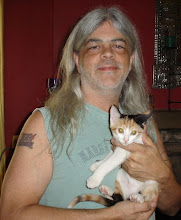Kinda busy finishing up the house for Halloween tomorrow so no time to do a proper post. Ran across this from the Askmen website and thought they were pretty good. Enjoy!
1- Halloween is the second-largest commercial holiday in America
Second only to Christmas (and a far second at that), Halloween is a commercial juggernaut in America, where people spend an estimated $6.9 billion annually on candy, costumes, decorations, and more. The holiday had much more modest beginnings in America. First celebrated in Colonial times by a few communities, it was still tied tightly to the harvest, and it featured fortune-telling and games on a communal level. Not until the 19th century’s immigrant influx did costumes and the concept of trick-or-treating reach American shores. And by the dawn of the 20th century, the holiday had lost many of its religious motifs, beginning instead to take shape as a commercial force to be reckoned with.
2- Halloween trick-or-treating originated from begging
The only real difference between begging and trick-or-treating is in perspective: The former is lowly, the latter is sanctioned. In fact, some U.S. states don’t hide it, calling Halloween “Beggars' Night,” while some groups have campaigned against the practice, labeling it extortion. Although no documentary evidence exists, trick-or-treating resembles a practice known as "souling," once performed in the British Isles by poor people around November 1. They would go door to door begging for food; in exchange, they would offer to pray for the souls of the dead.
3- The devil provides the light in a jack-o'-lantern
Another thing you didn’t know about Halloween, but that you should be aware of, is the fact that lighting the candle inside your carefully carved pumpkin is doing nothing less than introducing your porch to the fires of hell compliments of Satan, the original Red Menace. According to legend, a fellow named Stingy Jack twice played tricks on the devil, managing in the process to cut deals with him. The second of these deals was that he would not take Jack’s soul when he died. Yet upon his death, Stingy Jack learned that heaven had no place for a jackass like him, so he descended into hell, but the devil did the honorable thing: he kept up his end of their deal and denied him entrance. Caught between a hot rock (hell) and a high place (heaven), Jack had no choice but to wander endlessly in the darkness between the two, using a lantern he made from a hollowed-out turnip that was lit up with one of hell’s embers that had been generously donated by the devil.
4- The first jack-o'-lanterns were made from turnips
Nineteenth century Irish immigrants to America brought many traditions with them to their new country, and one of them was the jack-o'-lantern. In their case, however, it was a turnip carved out to make room for a light -- a practice in accord with the legend of Stingy Jack. Yet, according to the Ulster American Folk Park in County Tyrone, Northern Ireland, when those immigrants arrived in America they had trouble finding turnips, so they turned to a vegetable native to their new land: the pumpkin. The commercial success of the holiday then contributed to the spread of the traditions associated with this American interpretation.
5- Halloween was the ancient Celtic New Year's Eve
For the Celts, the new year began on November 1; or, in more drastic terms, it began at the traditional end of summer harvest and the onset of winter -- the seasonal commencement of death. On the night before, the Celts believed that the realms of both the living and the dead became fuzzy enough to permit dead spirits to create enormous problems, such as destroying crops meant to sustain them through the difficult winter months.
The presence of these spirits enabled Celtic priests, known as Druids, to make reasonable predictions about just how harsh the winters would be, providing the villages with some guidance about how to manage the coming months. While accompanying festivities did not include fireworks, party hats and wobbly chants of “Auld Lang Syne,” they did feature costumes, bonfires and the sharing of scary stories (fortune-telling, actually, but depending on the content, it could be very scary).





